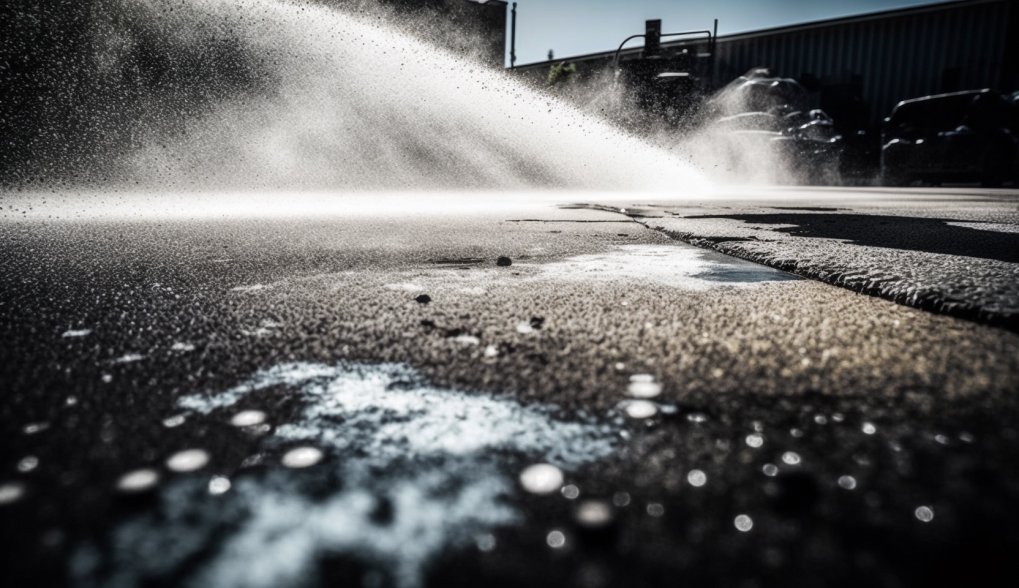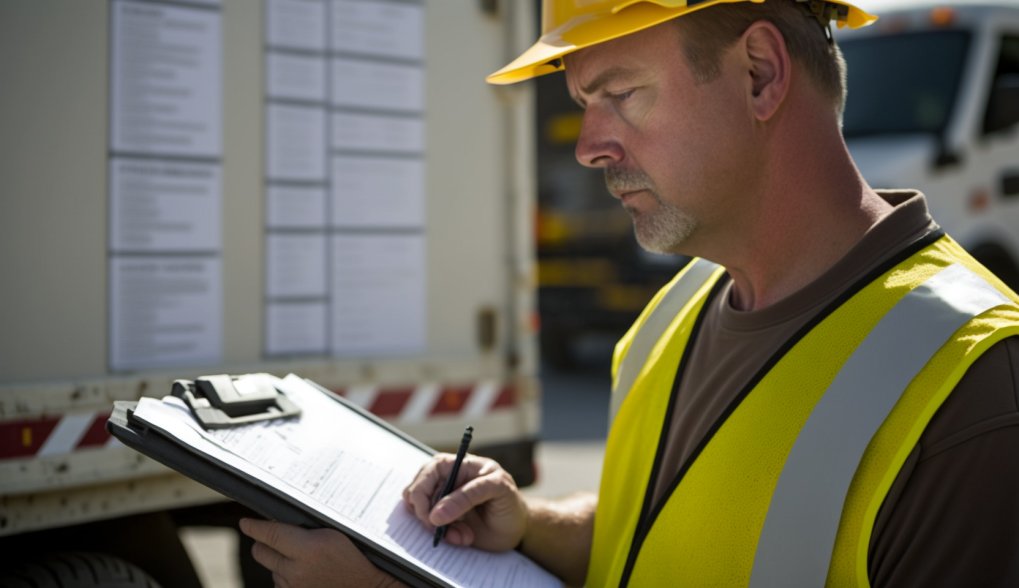A well-maintained parking lot is the first thing customers and visitors notice when arriving at a business or property. It not only creates a welcoming atmosphere but also ensures safety and compliance with Canadian regulations. This comprehensive guide will help you develop an effective parking lot cleaning checklist, understand best practices, and tackle the challenges of maintaining a clean and attractive parking area.
Table of Contents
Introduction
Parking lots are often overlooked when it comes to property maintenance. However, a clean and well-maintained parking lot has many benefits, such as improving safety, reducing environmental impact, and enhancing the overall appearance of a property. In this article, we will explore the importance of parking lot cleaning, discuss the relevant Canadian regulations, and provide a step-by-step guide to creating and implementing a comprehensive cleaning plan.
Why is parking lot cleaning important?
A clean parking lot not only looks more attractive but also has several practical benefits. Regular cleaning helps prevent the buildup of debris, oil, and grease, which can cause slips and falls. It also prevents the growth of weeds and moss, which can damage surfaces and cause tripping hazards. Additionally, maintaining a clean parking lot can deter pests and prevent the accumulation of pollutants that can harm local ecosystems.
Understanding Canadian regulations
In Canada, property owners are responsible for maintaining safe and clean parking lots. This includes ensuring proper drainage, removing snow and ice, and repairing any potholes or cracks. Failure to comply with these regulations can result in fines or legal action. To avoid any issues, it’s crucial to familiarize yourself with the relevant laws and guidelines in your province or territory.
Preparing for the Cleaning Process
Before diving into the actual cleaning process, it’s essential to prepare and plan your approach. This includes scheduling and time management, identifying potential hazards, acquiring the right equipment, and assembling your cleaning team.
Scheduling and time management
Proper scheduling and time management are critical to ensure that your parking lot remains clean and safe. Consider creating a cleaning calendar that outlines the frequency of different tasks, such as daily litter removal, weekly power washing, and seasonal maintenance. This will help you stay organized and ensure that no tasks are overlooked.
Creating a cleaning calendar
A cleaning calendar should be tailored to the specific needs of your parking lot. Consider factors such as the size of the lot, the amount of traffic it receives, and the local climate. For example, a large parking lot with heavy traffic may require more frequent cleaning, while a smaller lot in a mild climate may require less maintenance. Be sure to also account for any seasonal changes, such as increased leaf litter in the fall or snow and ice removal in the winter.
Identifying potential hazards
Before starting the cleaning process, it’s essential to identify any potential hazards that could pose a risk to your cleaning team or customers. This includes assessing the condition of your drainage systems, checking for any cracks or potholes, and ensuring that all signage is visible and in good condition.
Assessing drainage systems
A properly functioning drainage system is essential for preventing the accumulation of water, which can cause slips and falls, damage surfaces, and contribute to pollution in nearby water bodies. Inspect your drainage system regularly for signs of blockages or damage and promptly address any issues you find.
Recognizing safety risks
Safety risks in a parking lot can include poor lighting, damaged or missing signage, and poorly marked pedestrian crossings. It’s important to address these hazards as part of your cleaning and maintenance routine. Consider conducting regular safety audits to identify and rectify any potential risks.
Acquiring the right equipment
Having the appropriate equipment is essential for effective parking lot cleaning. Common equipment includes power washing machines, sweepers and scrubbers, and eco-friendly cleaning solutions. Be sure to research and invest in the best equipment for your specific needs and budget.
Power washing machines
There are different types of power washing machines that can be used for cleaning parking lots. High-pressure rinse with a pressure washer is usually enough for regular cleaning of parking garages that do not have a lot of stains. Power washing machines use high-pressure water to remove dirt, stains, and debris from surfaces. They are especially effective at cleaning oil, grease, and grime from parking lot surfaces. There are various types of power washers available, so choose one that best suits your needs and budget.
Sweepers and scrubbers
Sweepers and scrubbers are machines designed to clean large surface areas quickly and efficiently. They can be used to remove debris, dirt, and stains from parking lot surfaces. Some models also feature vacuum systems to collect debris, making the cleaning process even more efficient.
Eco-friendly cleaning solutions
There are several eco-friendly cleaning solutions available for parking lot cleaning. The consistent use of water and eco-friendly cleaning solutions helps protect the environment from harmful chemicals. Using eco-friendly cleaning solutions can help reduce the environmental impact of your parking lot cleaning efforts. Look for products that are biodegradable, non-toxic, and phosphate-free to minimize harm to local ecosystems.
Assembling your cleaning team
Once you have the right equipment and a plan in place, it’s time to assemble your cleaning team. This could be a dedicated in-house team or an outsourced cleaning service. Whichever option you choose, ensure that your team is properly trained in the use of equipment and best practices for parking lot cleaning and maintenance.
The Essential Checklist
Now that you’re prepared and equipped, it’s time to dive into the essential parking lot cleaning tasks. This checklist covers removing debris and litter, cleaning stains and spills, power washing and scrubbing surfaces, maintaining landscaping, ensuring proper drainage, and inspecting and repairing surfaces.
| Checklist Task | Description |
|---|---|
| Removing debris and litter | Debris and litter should be removed regularly to maintain the appearance and safety of the parking lot. |
| Cleaning stains and spills | Stains and spills, such as oil and grease, paint, and graffiti, should be cleaned promptly to prevent damage to the parking lot surface and maintain its appearance. |
| Power washing and scrubbing surfaces | Power washing and scrubbing can remove dirt, grime, and other debris from parking lot surfaces, improving their appearance and safety. |
| Maintaining landscaping | Landscaping should be maintained to enhance the appearance of the parking lot and ensure that trees, bushes, and other plants do not obstruct traffic or create hazards. |
| Ensuring proper drainage | Drainage systems should be inspected and maintained to prevent water from pooling in areas of the parking lot, which can cause damage and create safety hazards. |
| Inspecting and repairing surfaces | Surfaces should be inspected regularly for potholes, cracks, and other damage, which should be repaired promptly to prevent further damage and ensure safety. |
| Line markings and signage | Line markings and signage should be refreshed regularly to ensure safety and compliance with regulations. |
Removing debris and litter
A clean parking lot starts with the removal of debris and litter. This not only improves the appearance of the area but also prevents potential hazards and damage to surfaces.
Regularly walk through your parking lot, picking up trash and debris such as leaves, branches, and litter. Ensure that trash cans are placed strategically throughout the parking lot and are emptied regularly to discourage littering.
Cleaning stains and spills
Stains and spills, such as oil, grease, paint, and graffiti, can detract from the appearance of your parking lot and may even present safety hazards. Address these issues promptly to maintain a clean and safe environment.
Oil and grease
Oil and grease stains can be slippery and dangerous for pedestrians and vehicles. Use a power washer and an eco-friendly degreaser to remove these stains from your parking lot surfaces.
Paint and graffiti
Paint spills and graffiti can be unsightly and may even lead to further vandalism. Use a power washer or a graffiti remover to clean these stains. Consider adding a protective coating to surfaces that are prone to graffiti to make future cleanups easier.
Power washing and scrubbing surfaces
Power washing and scrubbing are essential for removing dirt, grime, and stains from your parking lot surfaces. Regular cleaning helps prolong the life of your surfaces and improves the overall appearance of your parking lot.
Basic Pressure Washing Tips for Beginners
Power wash your parking lot surfaces at least once a year, or more frequently if needed. Be sure to follow the manufacturer’s instructions for your specific power washer and use appropriate cleaning solutions for the best results.
Maintaining landscaping
A well-maintained landscape can greatly enhance the appearance of your parking lot. Regularly trim trees and bushes, care for grass and plants, and remove any dead or damaged vegetation.
Trimming trees and bushes
Overgrown trees and bushes can obstruct visibility and create safety hazards. Trim back branches and foliage regularly to maintain clear sightlines and prevent damage to vehicles and pedestrians.
Caring for grass and plants
A healthy landscape can improve the overall appearance of your parking lot and provide environmental benefits. Water, fertilize, and mow grass as needed, and care for plants and flowers to ensure they remain healthy and vibrant.
Ensuring proper drainage
Proper drainage is crucial for preventing the accumulation of water and debris in your parking lot. Inspect your drainage system regularly for signs of blockages or damage and promptly address any issues you find.
Inspecting and repairing surfaces
Regularly inspect your parking lot surfaces for signs of wear and tear, such as potholes, cracks, and faded line markings. Addressing these issues promptly can help prevent accidents, prolong the life of your surfaces, and maintain a professional appearance.
Potholes and cracks
Potholes and cracks can pose a hazard to pedestrians and vehicles and can worsen if left untreated. Repair any damaged areas as soon as possible to prevent further damage and maintain a safe environment.
Line markings and signage
Clear line markings and signage are essential for directing traffic and maintaining a safe and orderly parking lot. Regularly inspect your markings and signage for signs of wear and fading, and repaint or replace them as needed to ensure they remain visible and effective.
Post-Cleaning Activities
Assessing the results
After completing the cleaning process, it’s essential to assess the results to determine the effectiveness of your efforts. Take the time to walk through your parking lot and inspect the surfaces, markings, and overall cleanliness. Make note of any areas that may require additional attention or improvements in your cleaning plan.
Identifying areas for improvement
As you assess the results of your cleaning efforts, identify any areas where your plan may need adjustments. Consider factors such as cleaning frequency, equipment used, and cleaning products. If you find recurring issues or stubborn stains, research alternative solutions or consult with a professional parking lot cleaning service to address these challenges.
Updating your cleaning plan
Based on your assessment and identification of areas for improvement, update your parking lot cleaning plan accordingly. Regularly review and adjust your plan as needed to ensure optimal cleanliness and maintenance of your property. Keep in mind that seasonal changes may require adjustments to your cleaning plan, such as increased frequency during winter months to manage snow and ice.
Ensuring regulatory compliance
In Canada, it’s essential to ensure that your parking lot meets all applicable regulations and guidelines. This includes accessibility requirements, proper stormwater management, and waste disposal practices. Local governments and other local authorities in British Columbia can set requirements for accessible parking spaces through their bylaws. Regularly review any changes to regulations and update your cleaning and maintenance plan to ensure continued compliance.
Key Takeaways:
- Assess the results of your cleaning efforts by inspecting the parking lot. Identify areas that may require additional attention or improvements.
- Identify areas where your cleaning plan may need adjustments. Research alternative solutions or consult with professionals for recurring issues.
- Update your cleaning plan based on your assessment and areas for improvement. Regularly review and adjust your plan as needed, considering seasonal changes.
- Ensure your parking lot meets all applicable regulations and guidelines.
Wrapping Up: Achieving Parking Lot Perfection
By following this essential checklist and adopting a proactive approach to parking lot cleaning and maintenance, you can ensure that your property remains safe, attractive, and compliant with Canadian regulations. Regular upkeep not only improves the overall appearance of your parking lot but also helps extend the life of your surfaces, making it a worthwhile investment in the long run.
Frequently Asked Questions
How often should I clean my parking lot?
The frequency of cleaning depends on factors such as the size of the lot, the amount of traffic it receives, and the local climate. In general, aim for daily litter removal, weekly power washing, and seasonal maintenance.
What types of equipment do I need for parking lot cleaning?
Some essential equipment for parking lot cleaning includes power washers, sweepers and scrubbers, and eco-friendly cleaning solutions.
Can I use a regular garden hose to clean my parking lot?
While a garden hose can be used for light cleaning, a power washer is more effective at removing tough stains, dirt, and grime from parking lot surfaces.
What should I do if I find a drainage issue in my parking lot?
If you discover a drainage issue, such as a blocked or damaged drain, address it promptly to prevent water accumulation and potential damage to surfaces.
How can I prevent graffiti in my parking lot?
Consider adding a protective coating to surfaces that are prone to graffiti. This can make future cleanups easier and may deter would-be vandals.
Sources
- Semper Fi Striping. “How Do You Clean a Commercial Parking Lot?” Semper Fi, Semper Fi, 25 Aug. 2021, www.semperfistriping.com/post/how-do-you-clean-a-commercial-parking-lot. Accessed 25 Apr. 2023.
- “Parking Garage Cleaning and Pressure Washing.” Wash on Wheels, 9 Apr. 2018, washonwheels.net/building-pressure-washing/parking-garage-pressure-washing/. Accessed 25 Apr. 2023.
- “Accessibility – Province of British Columbia.” Gov.bc.ca, 2023, www2.gov.bc.ca/gov/content/industry/construction-industry/building-codes-standards/accessibility. Accessed 25 Apr. 2023.









